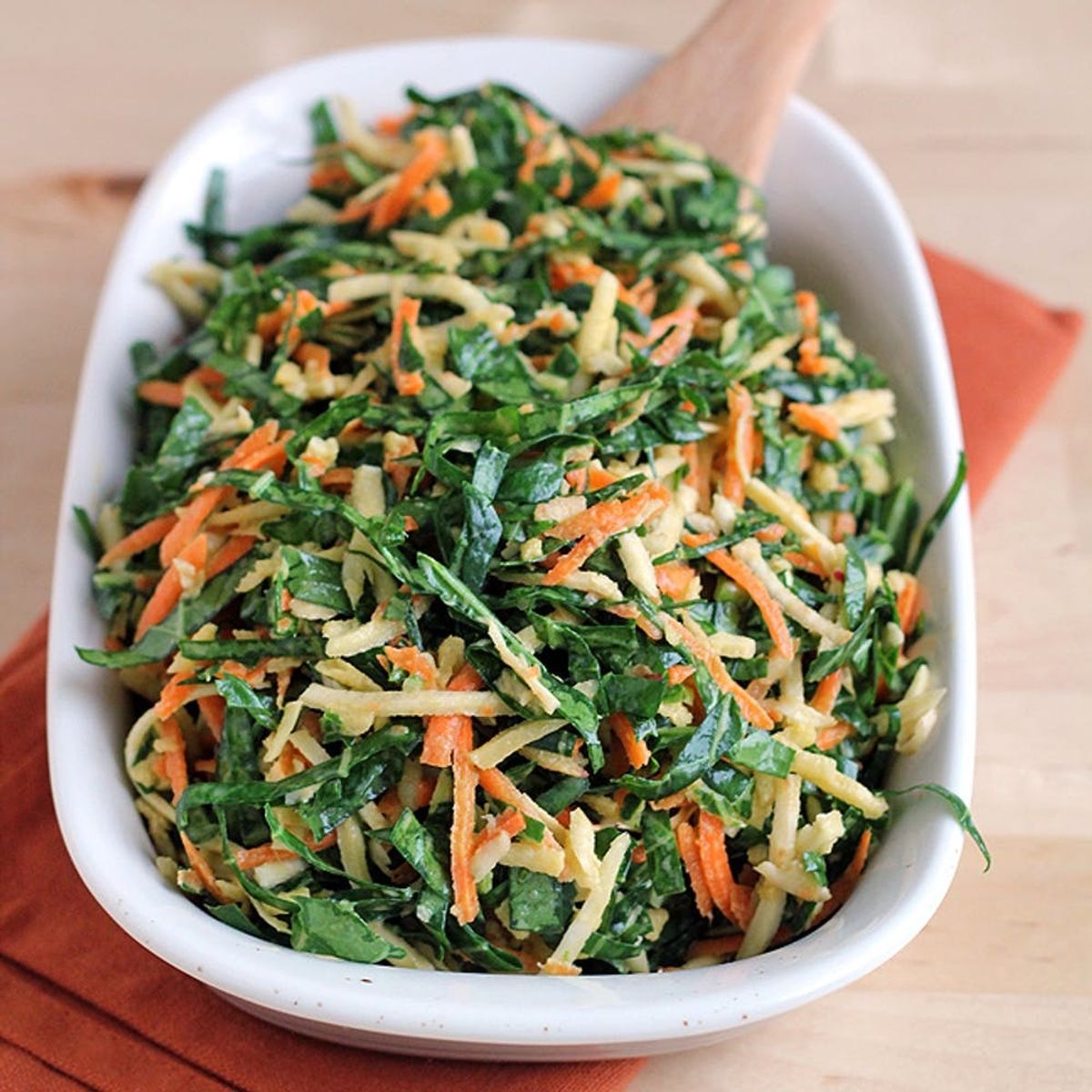Newsflash: Collard Greens are *so* hot right now.
What Do I Make With That? 7 Ways to Get Creative With Collard Greens

What
Kale has certainly gotten our attention in recent years as a go-to cooking green, but collard greens definitely deserve a bit more time in the spotlight. Part of the brassica family, along with the likes of broccoli and cabbage, they have a rep for being an acquired taste. But developing a liking for collards is surprisingly easy for everyone. Read on for all of the details!
Where
In some parts of the country, you can readily find bunches of these gorgeous greens in the produce section of just about any grocery store, regardless of the time of year. Health food stores and farmers’ markets are also terrific sources for the good stuff, especially during their peak growing season. Both ornamental and edible, they’re also a great crop to grow in your home garden if you have the space.
When
You can find collard greens year-round, but they hit their sweet spot (literally) during the coldest months of the year (January through April). Like their leafy green relatives, they’re a fantastic cold-resistant crop to plant in your garden for a fresh winter harvest. As an added bonus, they tolerate heat well enough to earn them a rep for being a Southern specialty.
To stretch the season, you can preserve them in a few different ways. They take well to dehydration, becoming a nutrient-rich powder to sprinkle on popcorn or stir into smoothies. Additionally, you can blanch the leaves, remove as much moisture as possible and freeze them to add a boost to pasta and soups throughout the year. And don’t toss those stems! They can be upcycled into crisp, tasty pickles just as well as those from a bunch of kale or swiss chard.
Why
We could all probably stand to incorporate a few more veggies into our diets, but beyond that, these greens pack a hefty soluble fiber and nutrient punch — a characteristic the entire brassica family is known for. They are a terrific source vitamins A, C and K, as well as minerals like calcium and manganese.
How
To retain as many nutrients as possible, the three recommended cooking methods are steaming, microwaving and stir frying. If you do go the boiling or braising route though, don’t toss the broth — or as Southern cooks call it, pot likker. Instead, sip it as a healthy and flavorful sort of brodo. You may also forgo cooking altogether, and use the greens raw as wraps or in a variety of different salads. Below are a few of our favorite recipes to get you started.
1. Collards With Bacon: A flash in the pan along with a few strips of bacon and a sprinkle of salt and pepper is all it takes to whip up this vibrant side dish. Don’t forget the cornbread! (via Naturally Loriel)
2. Spiced Lentil Soup (Vegan): Collards may have a reputation for usually being served with a side of meat, but this hearty and healthy soup proves that they can easily go without and still be delicious. Simmer up a big batch and freeze a few bowlfuls to have on hand for a quick, comforting meal on busy nights. (via Cookie and Kate)
3. Collard Green Chips: Change things up from the usual kale chip and put collard greens to use instead. These crispy snacks are dusted with Parmesan or cheesy-tasting nutritional yeast, making them a healthy Doritos swap for both kids and adults alike. (via Cookies to Kale)
4. Southern Carbonara: Adding a handful of greens to creamy carbonara makes it easy to get your veggies without sacrificing anything in the flavor or comfort department. You’ll love the combination of luxe textures and tastes in every last tangle of this pasta. It’s quite the nice change of pace from the usual mac and cheese. (via Spicy Southern Kitchen)
5. Collard Vegetable Wraps With Creamy Basil Hemp Seed Sauce (Vegan): Consider leaving the tortilla or lavash behind and making your next wrap with a collard leaf instead. It’s not only a budget-friendly, low-carband paleo swap, but it’s also a great make-ahead lunch solution — you can assemble your sandwich the night before without it getting soggy by noon the next day. (via Gourmande in the Kitchen)
6. Ham Hock Cured Collard Greens With Barley Risotto: Traditional Southern-style preparations for collards require hours and hours atop the stove. Putting a slow cooker to use means you don’t need to tend to the pot all day long to yield delicious, full-flavored results. This dish becomes a complete meal with the addition of barley during the final few hours, but you can easily leave the grains out if that’s not your style. (via Fork Spoon Knife)
7. Collard Green Coleslaw (Raw): When summer cookout season rolls around, switch things up by swapping shredded cabbage out with collard greens in your next batch of ‘slaw. Parsnips and carrots lend both color and a bit of extra crunch to this version, while a smattering of grated apple provides a welcome touch of sweet-tart flavor. (via In Sonnet’s Kitchen)
Are you a fan of these greens already? What are your favorite traditional and nouveu ways to cook with them? Share with us below!
(Photos via Glory Foods, Piecely, Tim Sackton)



















